Estimated reading time: 09 minutes.
February/2016 - A 70-200mm f/4L IS USM ($1199) is nothing less than the third Canon EF 70-200 we see on blog do zack. Launched in 2006, it brings to the f/4 lineup the imager stabilizer from the bigger f/2.8L IS, missing in the vintage f/4L “non-IS” (1999, $599). Some clouds in the sky were enough to push the ISO up due to the lack of IS, also bringing the uncertainty of sharp images. The 70-200mm f/4L is a great lens, but the lack of stabilization is an issue. What to do when the giant, overweighted and expensive f/2.8L IS is not an option?
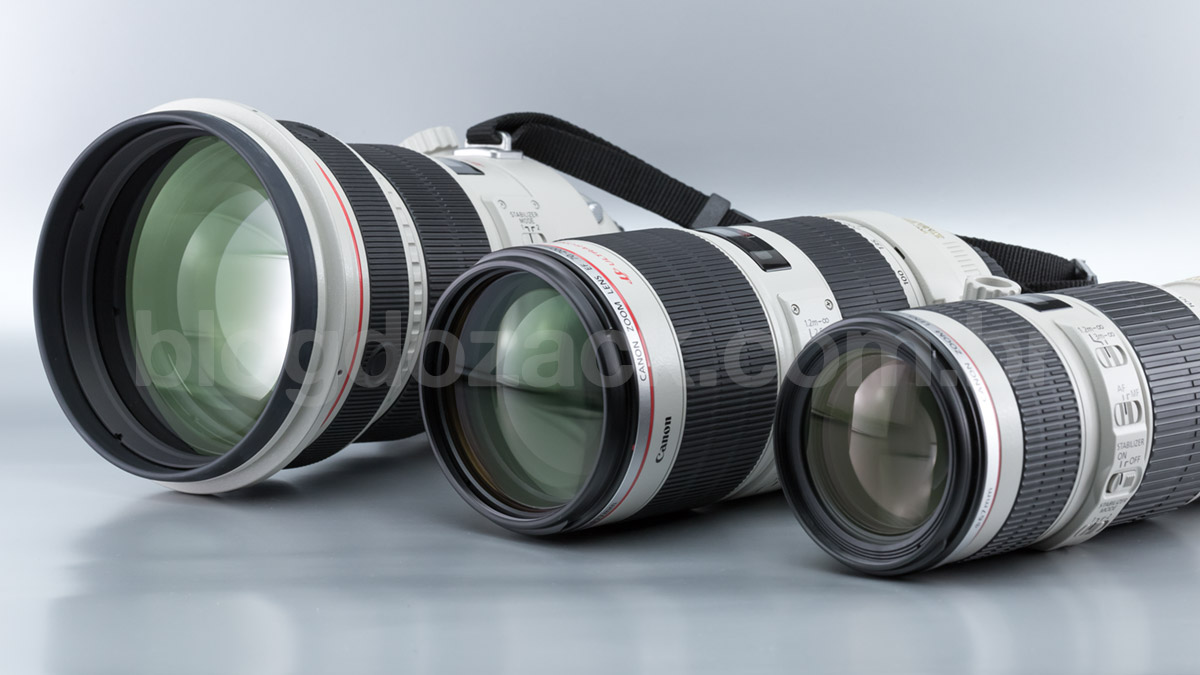
Enters the f/4L IS. Arriving on blog do zack for testing purposes, it will try to take the place of my EF 70-200mm f/2.8L IS II USM; a dream lens by many, but a nightmare for few. With a 1.49kg weight and a US$1999 price tag, the f/2.8 advantages quickly disappears as you hold it in your hands, cumbersome to carry around. A lighter alternative is welcomed, so I decided to give the f/4L IS a chance, also friendlier with your pockets. But is it worth double the cost of the vintage f/4L “non-IS”? And those using the larger f/2.8L, is the downgrade doable? Let’s find out! Nice reading.
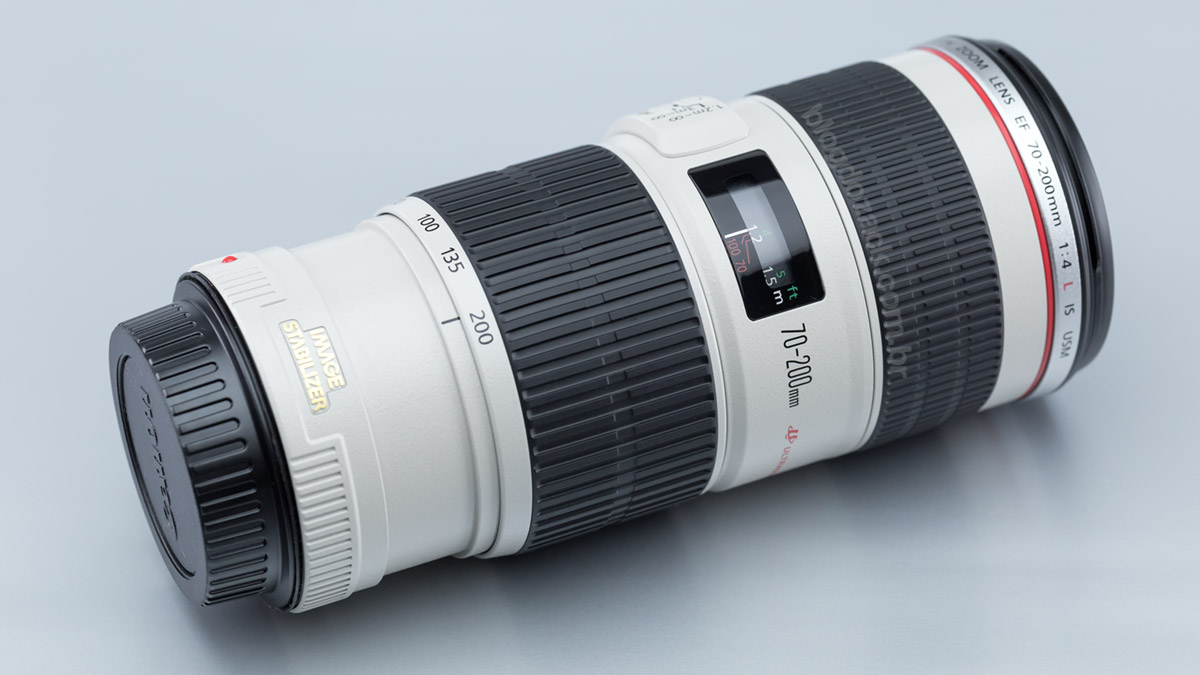
At 17×7.6cm alone or 24.5x10cm attached to the included ET-74 lens hood, all at 760g of metal, glass and some rubber; the EF 70-200mm f/4L IS USM is long on any EOS body and screams “working tool” for its solid build with a metal barrel. It’s long and calls lot of attention around the streets, just like the f/2.8, so it’s still aimed at professionals more than amateurs who will ruin the family weekend carrying such a big lens. But it balances well with all EOS bodies because it is light, marrying with polycarbonate models (like the 6D) as well as the magnesium 1D, 5D and 7D.

The EF 70-200mm f/4L: long as any telephoto, but thinner due to the smaller aperture.
Coming from the f/2.8L II IS, the f/4L summarizes as pure working pleasure as all excesses are gone. In hands the main difference is the weight and girth, obviously larger and uncomfortable on the f/2.8. But the genuine Canon L ergonomics continues intact, and there’s plenty of room for your left hands and your fingers rest on the rear zoom ring, with a short distance to the focusing ring at the front; identical layout within all 70-200L. The biggest highlight and my reason to be a faithful Canon user is the absolutely perfect torque and feedback on this rings.The force I need to operate the zoom is the same as sliding a smartphone menu. That reads: none. It’s butter smooth and feels like this since I got it out of the box, better than most Nikkors that require some soothing.
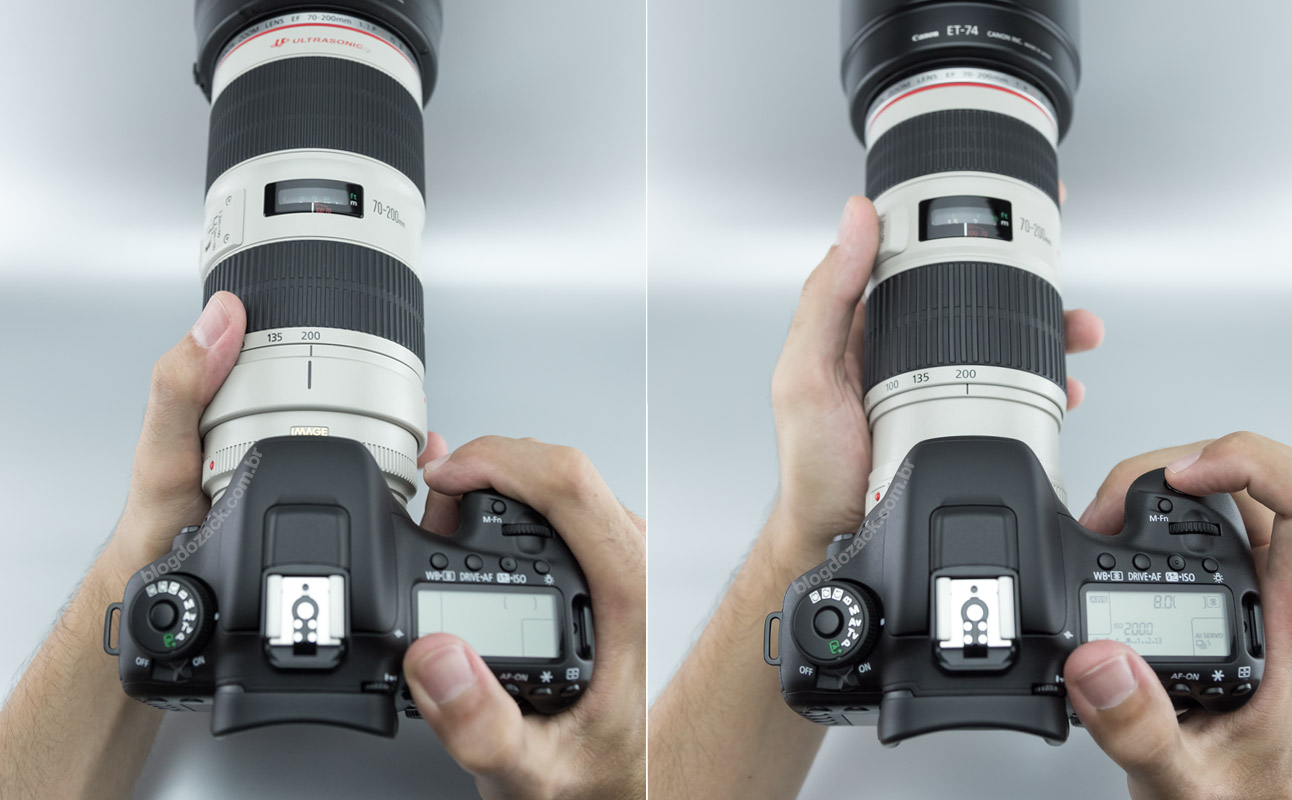
Sided by the f/2.8L IS II (left), the f/4L IS is much thinner and comfortable to operate.
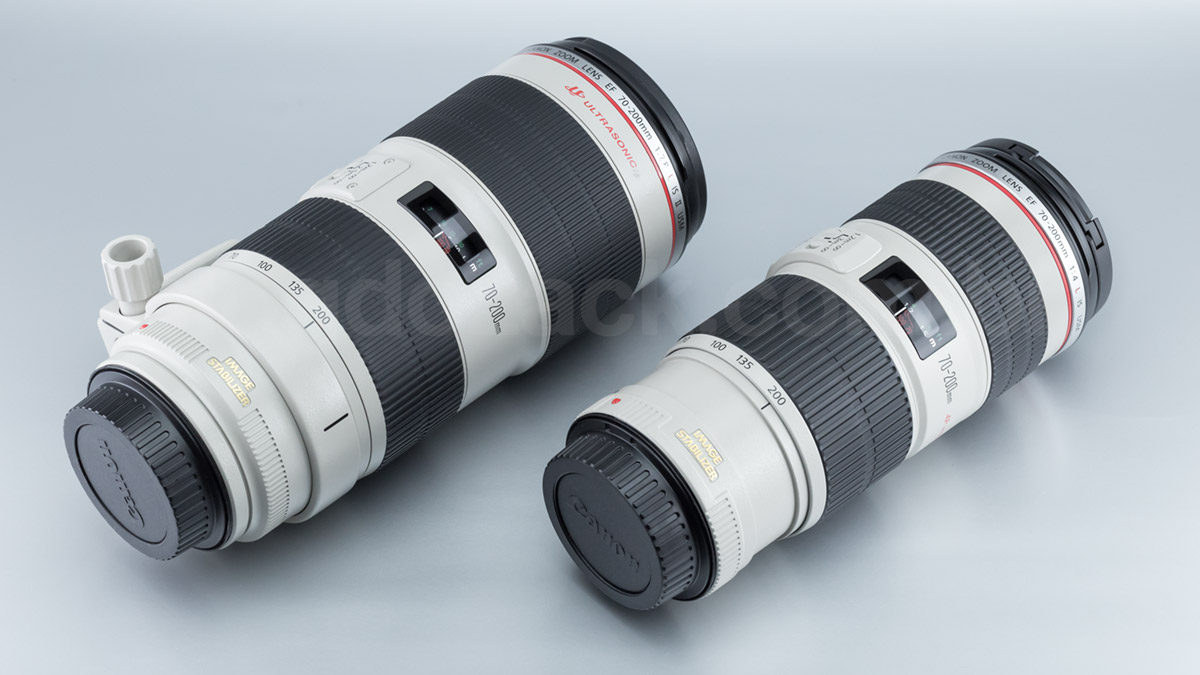
What a single f/stop mean: 19.8×8.8cm (f/2.8L, left) versus 17×7.6cm (f/4L, right).
From 70mm to 200mm the zoom ring turns 90º, the same as every 70-200L. There’s no torque or travel difference between distances and it even allows some zoom pulling during videos, as it is so smooth. At the front the focusing ring turns 150º from infinity to 1.2m MFD (minimum focusing distance), the same as others, and at the top the distance window is easy to read, with feet and meter markings. The switches for USM and IS are between rings, intuitive for thumb operation, better positioned than some 300/400L zooms that put it near the camera, closer to your face.
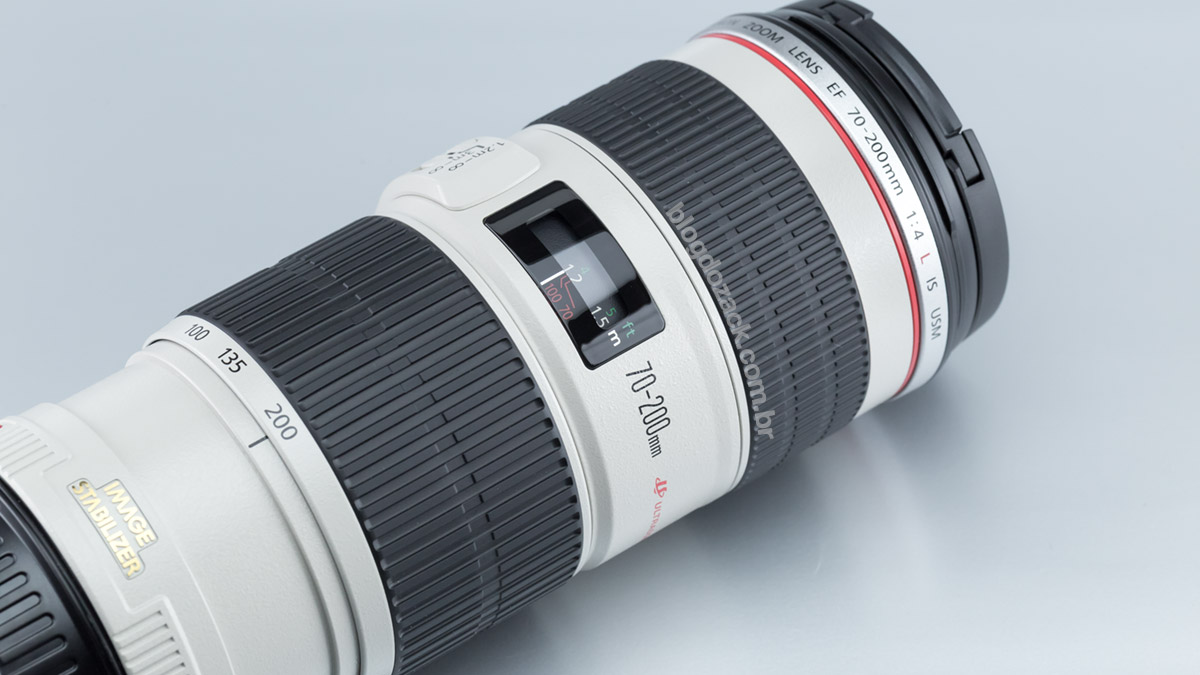
Both rings are flushed in the body: near the camera, a zoom ring; near the front, the focusing ring.
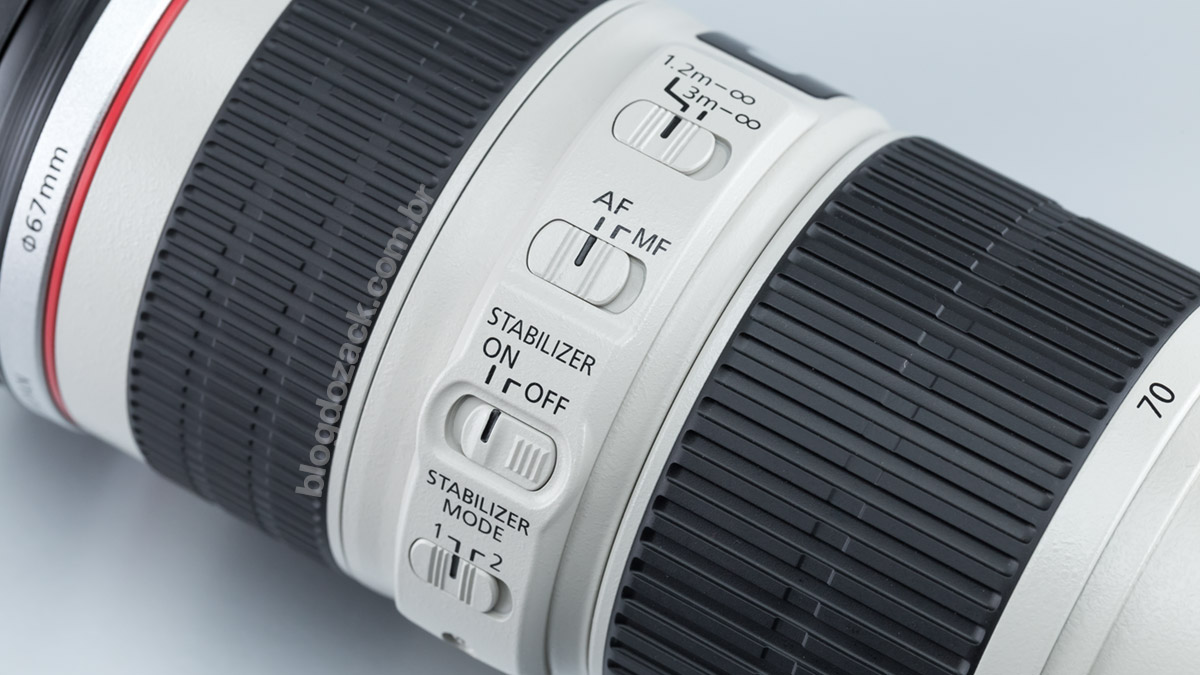
Control switches between rings: AF at the top, with limiter; IS at the bottom, with a second (2) panning mode.
Inside the AF motor is ring-type USM, fast, precise and silent. The EOS 7D Mark II effortlessly got complete action sets in focus, good for moving subjects or unexpected shots. It’s the same feeling I get on the outside, but inside: the perfect balance on the optical groups allows the motor the work in harmony. But on the other hand, compared to the 70-200mm f/2.8L II IS USM, I definitely felt a difference in speed. You can clearly see the camera viewfinder getting sharper, quicker with the f/2.8L II IS USM. The f/4L is not bad, but the newer f/2.8L IS II is even better.
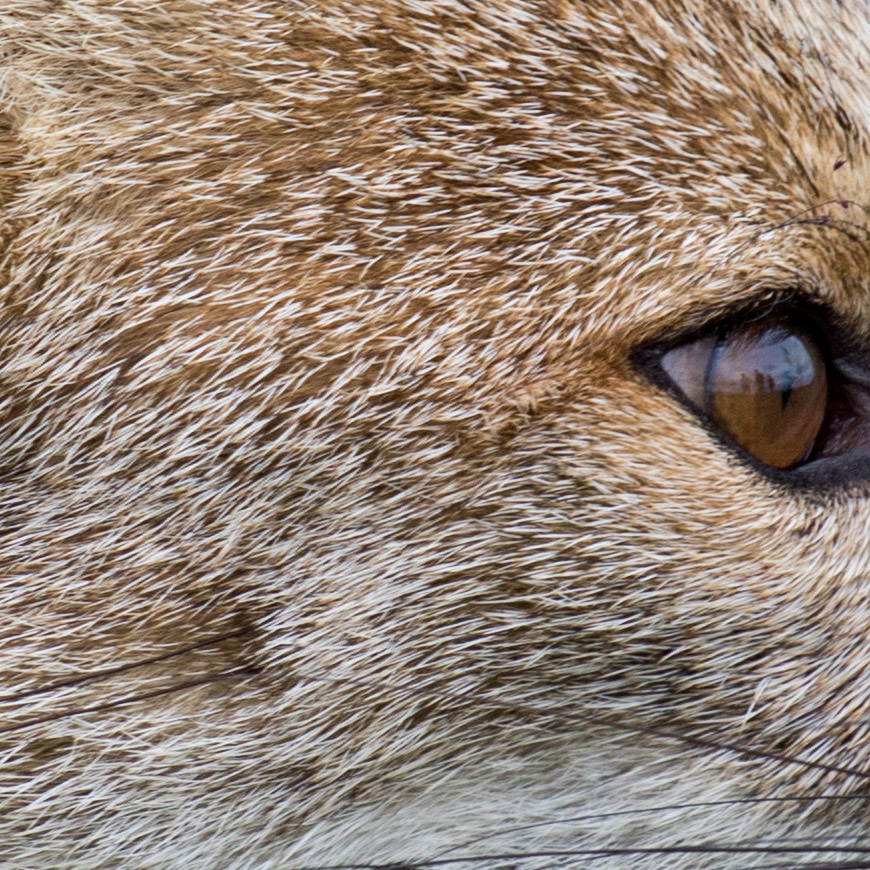
100% crop, perfect wide open details.

Notice how the EF 70-200mm f/2.8L IS II USM (left) is slightly quicker. Camera used: Canon EOS 7D Mark II.
The third generation Image Stabilizer is rated at 4 stops and works as advised. It’s noisier than I wanted, making a loud grinding sound inside, unlike any other EF I’ve ever used. It’s not the same “CLICK!” from some Nikkors, but a “rrhgnrrghrgmhnrgn” that sounds broken. I’ve heard it from other copies, so it’s not a defect, it’s a feature. At least it “holds” the composition in place prior to exposure, and allows slower shutter speeds at about 1/4 of a second at 200mm (!) not blurring the picture, something the non-IS version certainly can’t do. However such promise depends on technique, so don’t expect it to work shooting like a maniac. And there’s a Mode 2 for panning, used to deactivate one of the correction axis, good for linear motion like cars on a race track.
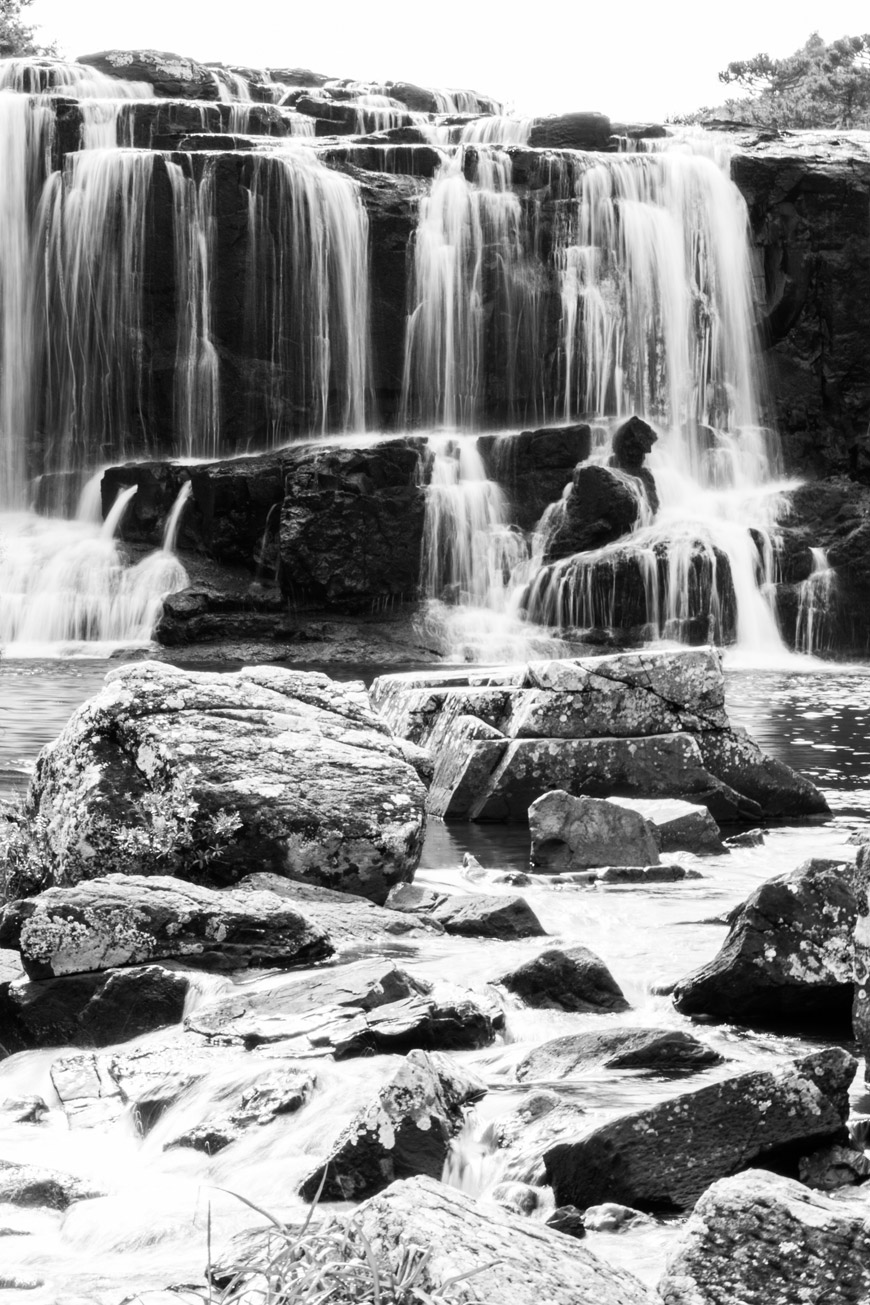
“Cascata Salto de Pelotas” with the EOS 7D Mark II at f/32 1/4 ISO100 @ 70mm; handheld long exposure.
The question is: is the image stabilizer worth double the cost of the non-IS f/4L? And the answer is no. Even with the IS engaged I managed to get 1/125 shots blurry, all to my fault as I completely neglected my own posture. Especially using the 7D Mark II, considered “high density” due to so many pixels on a small sensor, I should have paid better attention to the shutter speed. I didn’t and the IS module fixed less photos than I was expecting. So it’s not worth the “psychological” alibi and it costs a fortune. If I were to purchase it again, I would choose a non-IS f/4L plus a good tripod.
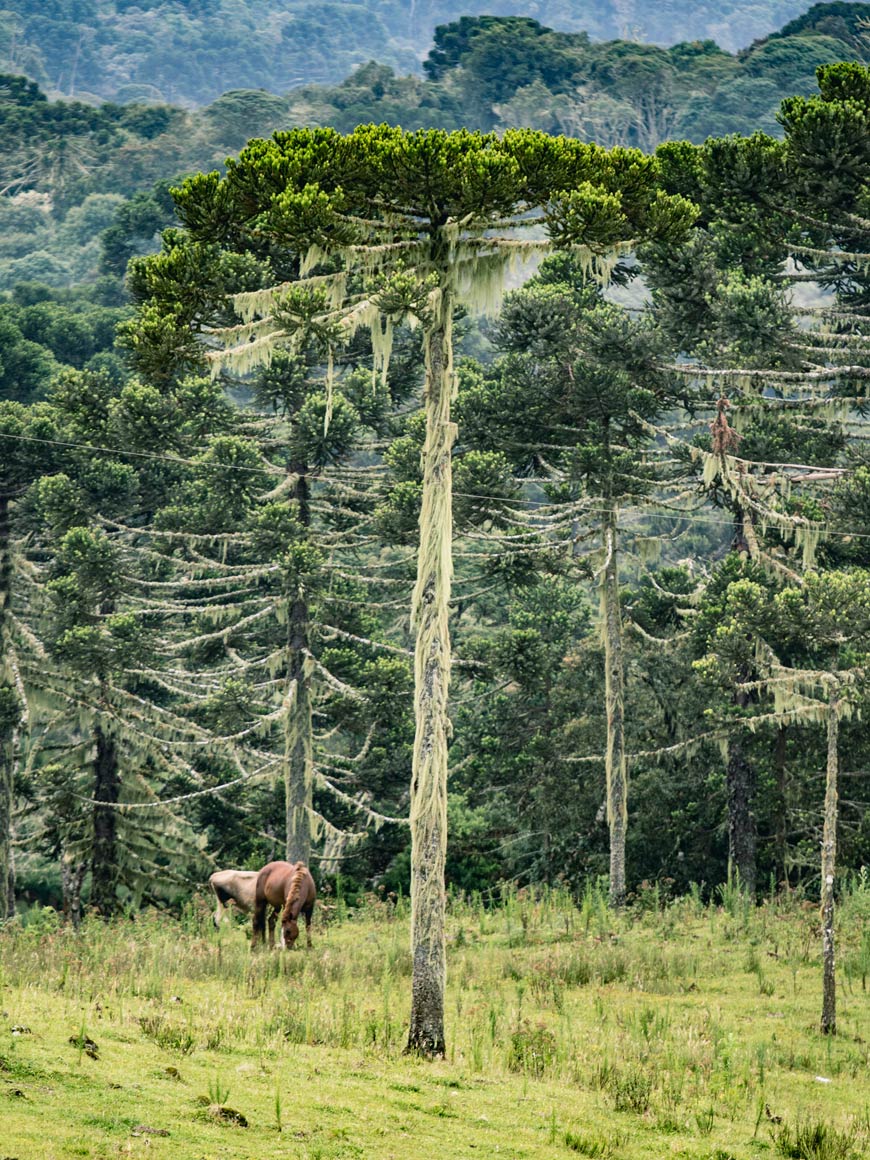
“Araucária” with the EOS 7D Mark II at f/4 1/80 ISO100 @ 200mm.

100% crop, at my bad posture’s fault, the four stops IS didn’t help at this 1/80 exposure..
At the front the ø67mm filters are small and accessible, certainly cheaper than the f/2.8 ø77mm. The filter thread seems plastic and sits inside the lens hood, that mounts on a different thread. The hood itself is friction based, harder to lock in place. At the back the metal mount is robust and the rear element sits deep inside the barrel, allowing the EF Extenders 1.4x and 2x to be used. Notice the resulting f/8 aperture won’t auto focus on most EOS bodies, just a few PRO models with a sensitive center point. It works with my EOS 7D Mark II, but doesn’t with my EOS 6D.
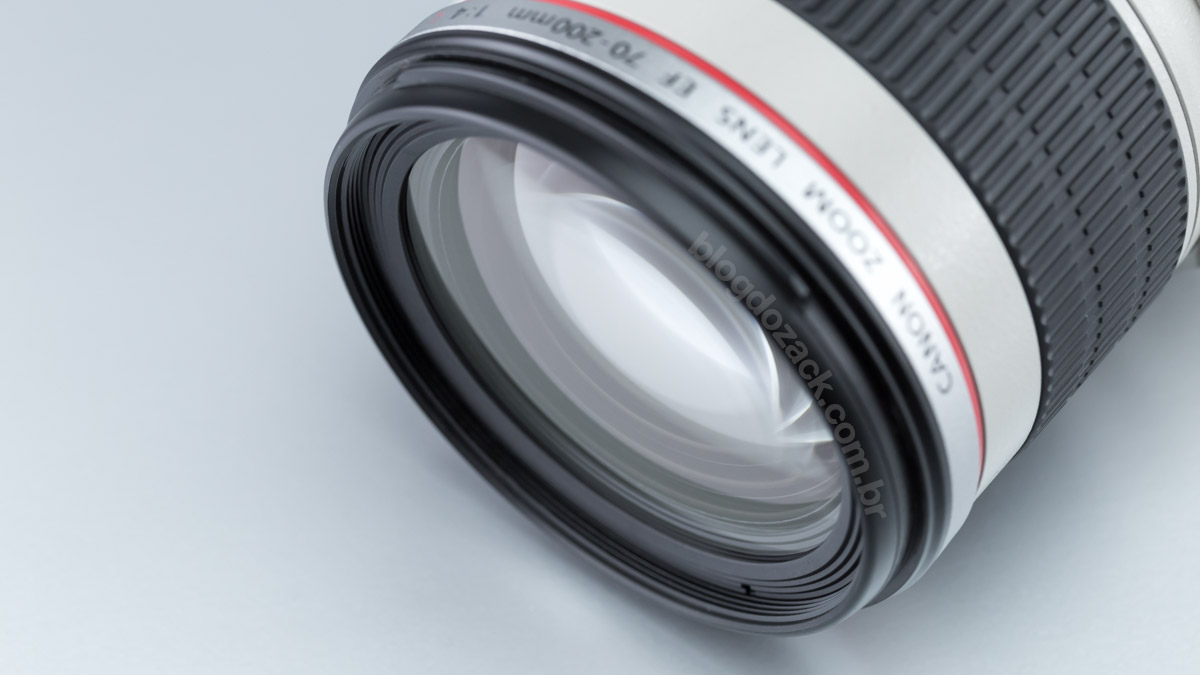
The ø67mm filters are attached to a front thread.
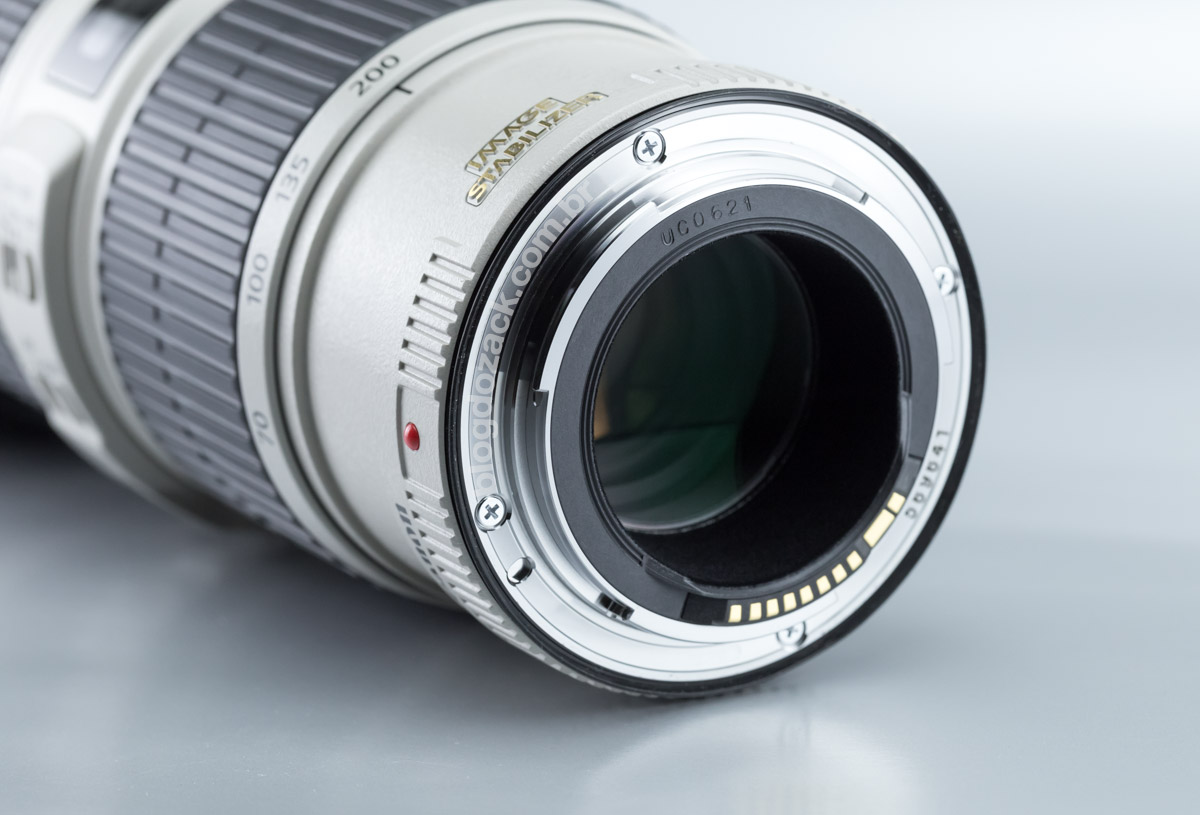
Metal mount features a rubber gasket for weather sealing.
The last feature is a declared Weather Resistance against water sprays and dust. There’s a rubber gasket around the metal mount, absent on the non-IS f/4L. Overall it doesn’t bring anything new to the table except the IS on the smaller package, that works well besides some excessive noise. But it won’t work miracles nor freezes your subject, so it’s real benefits are at doubt. You purchase this model for its size and weight, that’s the same as the non-IS f/4L that costs half the price. Is it worth the stabilizer? IMHO, no. But what about its pictures, are they comparable to the f/2.8s? Let’s see.
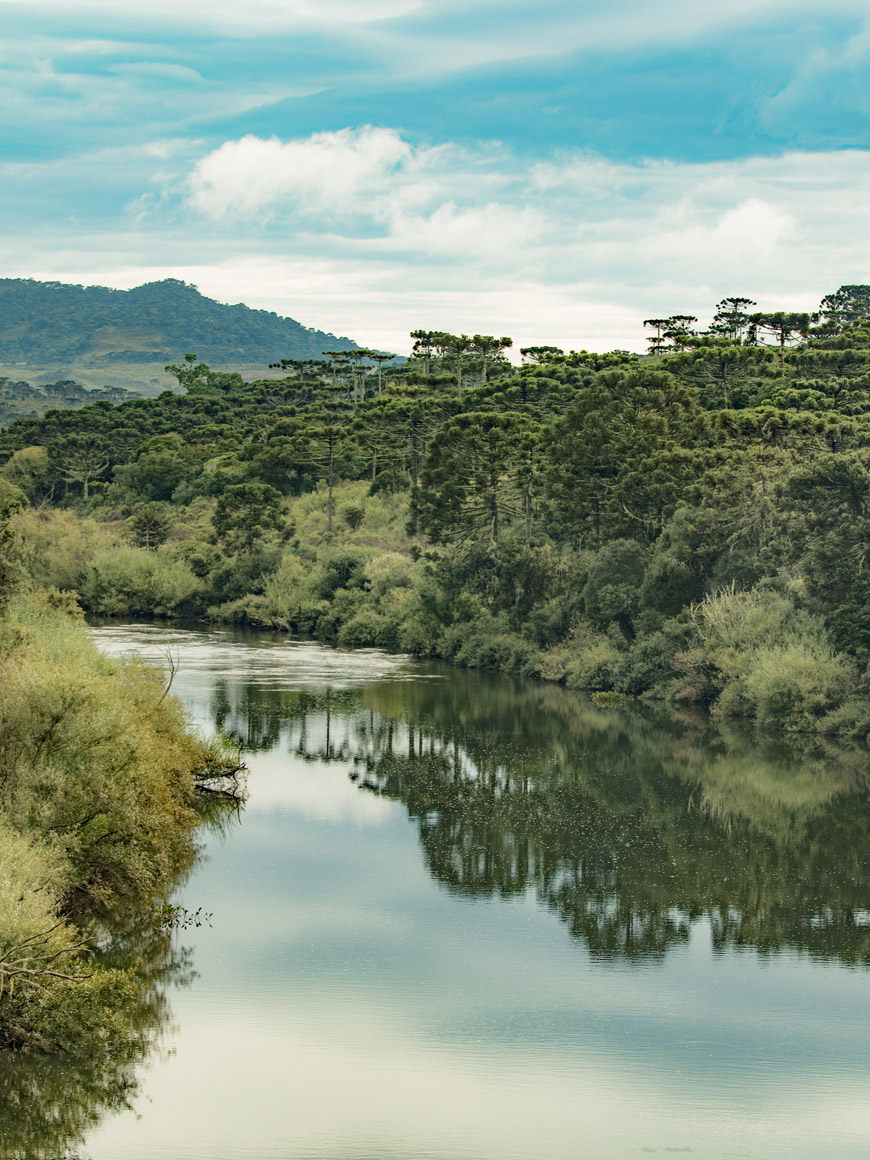
“Mata” at f/7.1 1/200 ISO100 @ 70mm.
With an optical project of 20 elements in 15 groups, four more than the non-IS f/4L besides the same number of fluorite (1) and UD (2); and three less than the top f/2.8L II IS USM (23EL19GR), the 70-200mm f/4L IS USM sits right in the middle of the EF 70-200L family. It’s not as expensive as its larger sisters, nor over simplified as the bottom of the pyramid. But optically speaking, that is a good and a bad thing altogether: it’s not behind the other models in key aspects like resolution and contrast, plus a near perfect aberration control; but it doesn’t show the same level of bokeh and vignette as the f/2.8s. It’s not bad for what it is, but at blog do zack we’ve seen better.
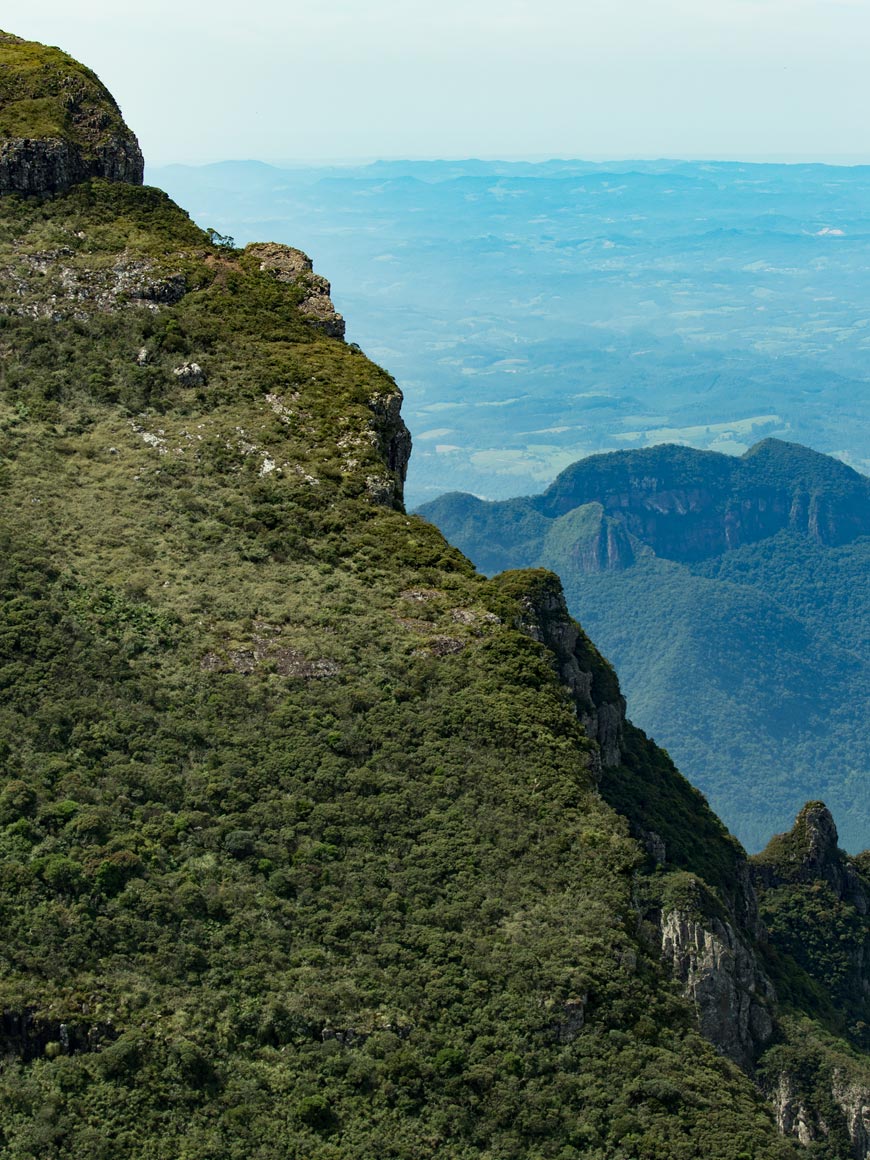
“Serra” at f/7.1 1/250 ISO100 @ 70mm.
Contrast and resolution are impeccable no matter the aperture, a hard to achieve performance on a zoom lens, but Canon always manage to master on its telephotos. From the widest f/4 up to the optimized f/8, there’s no difference in details from center to corners, that are scary sharp even on full frame. I had to double checked the EXIF on some files to make sure they were wide open, because you can clearly see all the details like grass, bricks, faraway billboards and people walking down the streets at f/4. It raises the question “who needs prime lenses?” so far in the optical game. Coming from the AF-S 105mm f/2.8G Micro-Nikkor review that impressed me with it’s landscape capabilities, the 70-200mm f/4L IS USM does the same on a zoom. Comparing it to the previous AF-S 28-300mm and 70-300mm reviews, there’s no argument: the 70-200L are on a class of their own.

“Manhã” at f/4 1/400 ISO400 @ 70mm.

100% crop, perfect details wide open.
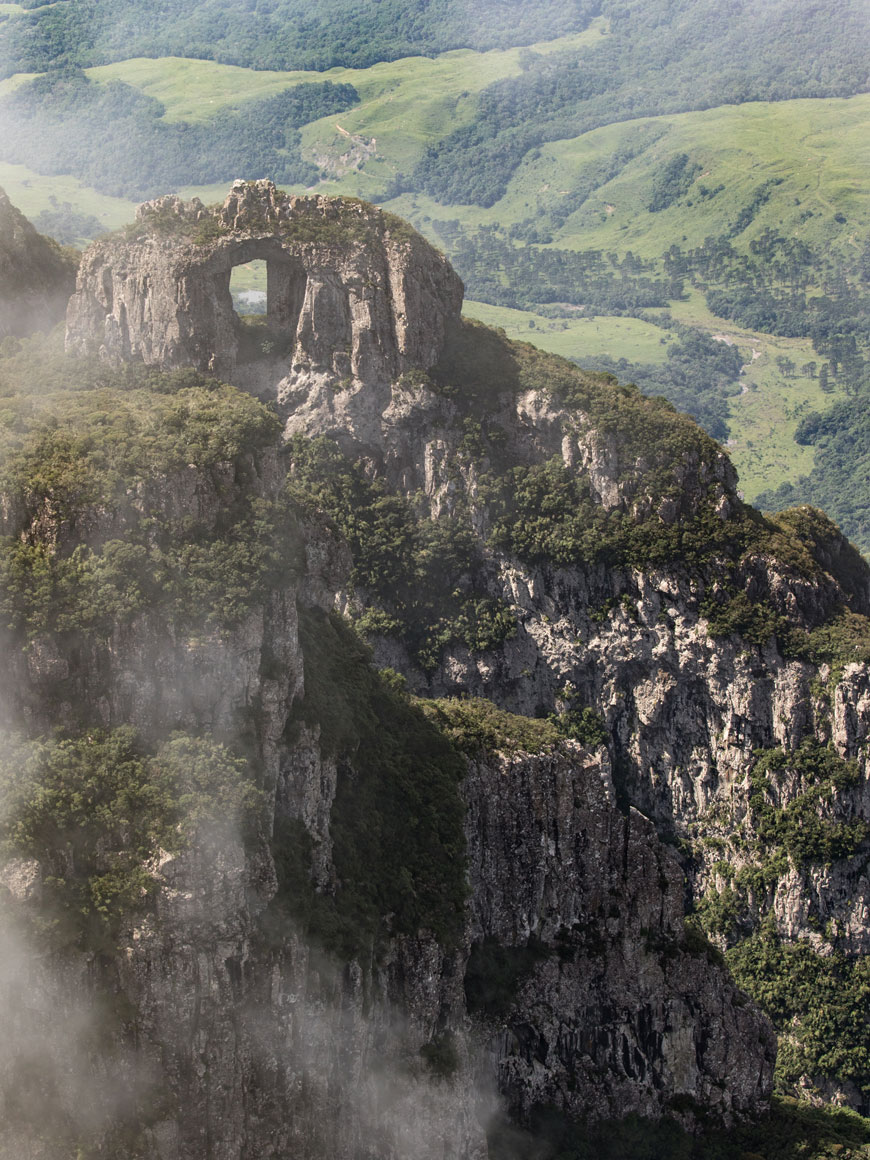
“Morro da Igreja” at f/7.1 1/250 ISO100 @ 70mm.
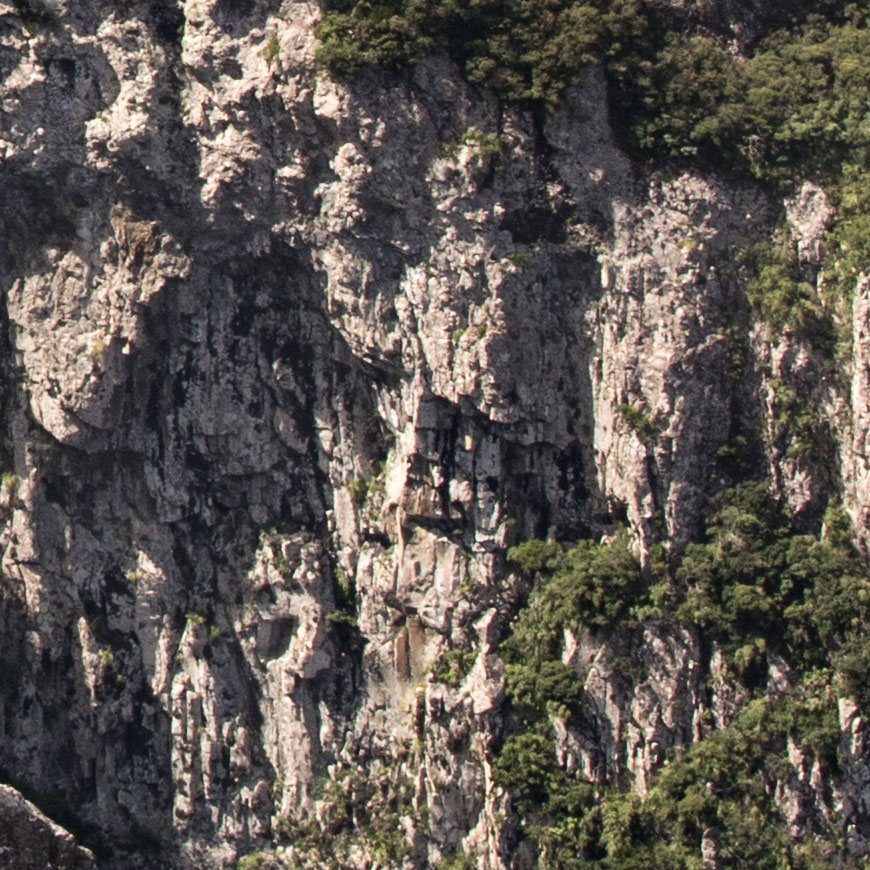
100% crop, some atmospheric distortion and diffraction at this aperture.

“S” at f/7.1 1/200 ISO100 @ 189mm.
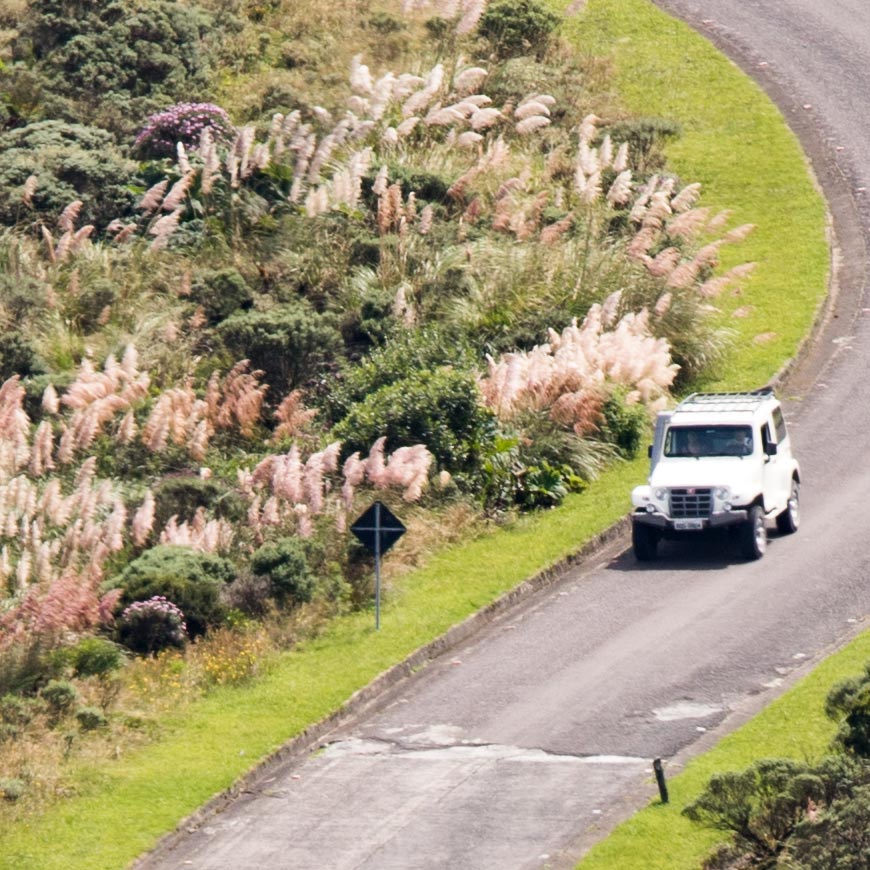
100% crop, heat waves will take away the sharpness on hot days.
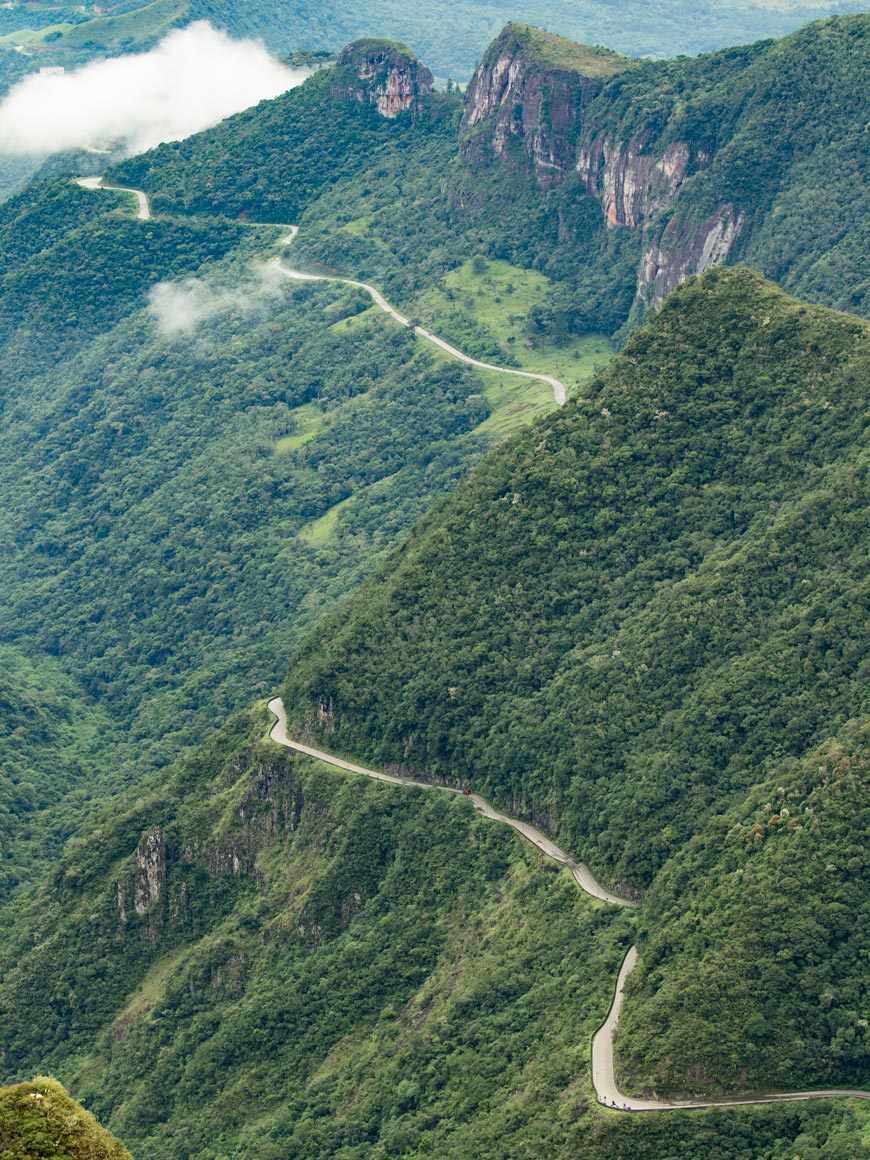
“Serra do Rio do Rastro” at f/7.1 1/100 ISO100 @ 70mm.
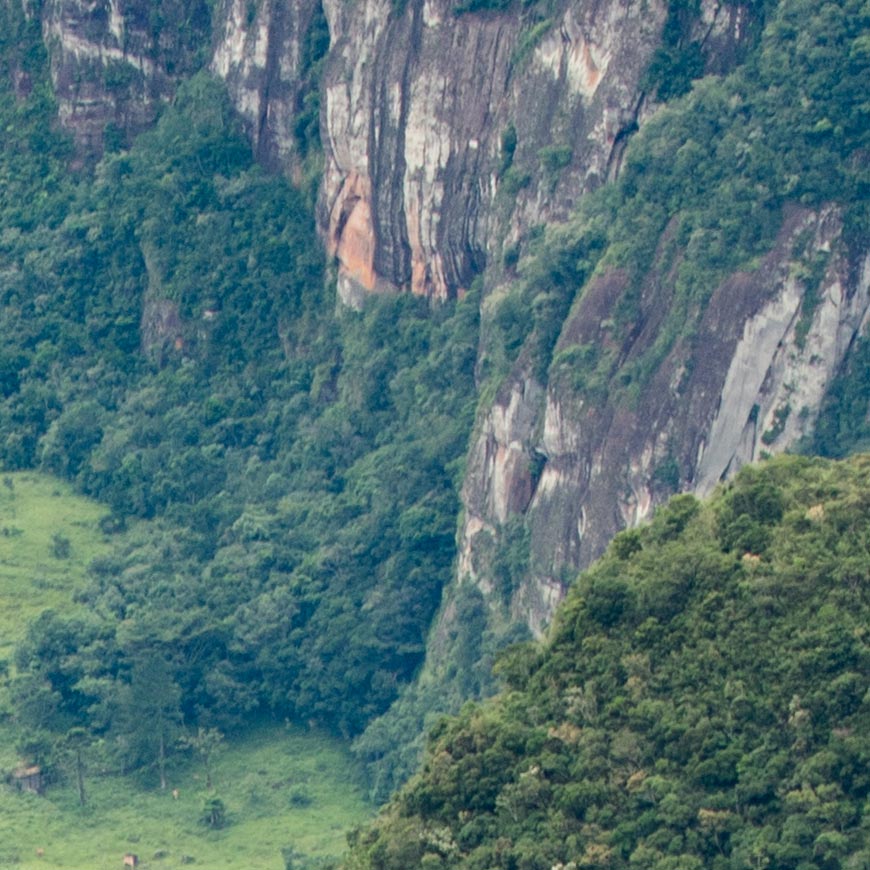
100% crop, telephoto details on the 70-200mm.
Chromatic aberrations that were very annoying on recent zoom reviews, besides the very different optical formulas, I know, are completely under control with this Canon. I start to wonder whether any manufacturer will ever beat Canon’s “Fluorite + UD” combo, because so far I haven’t seem anything similar from the competition. Nikon loves to use its ED on most lenses, but frankly I fail to see any improvement. Some fluorite is used on selected Nikkor telephotos, whilst Canon use it even on the lower end f/4L at US$599. The results are obvious: perfect files from edge to edge.
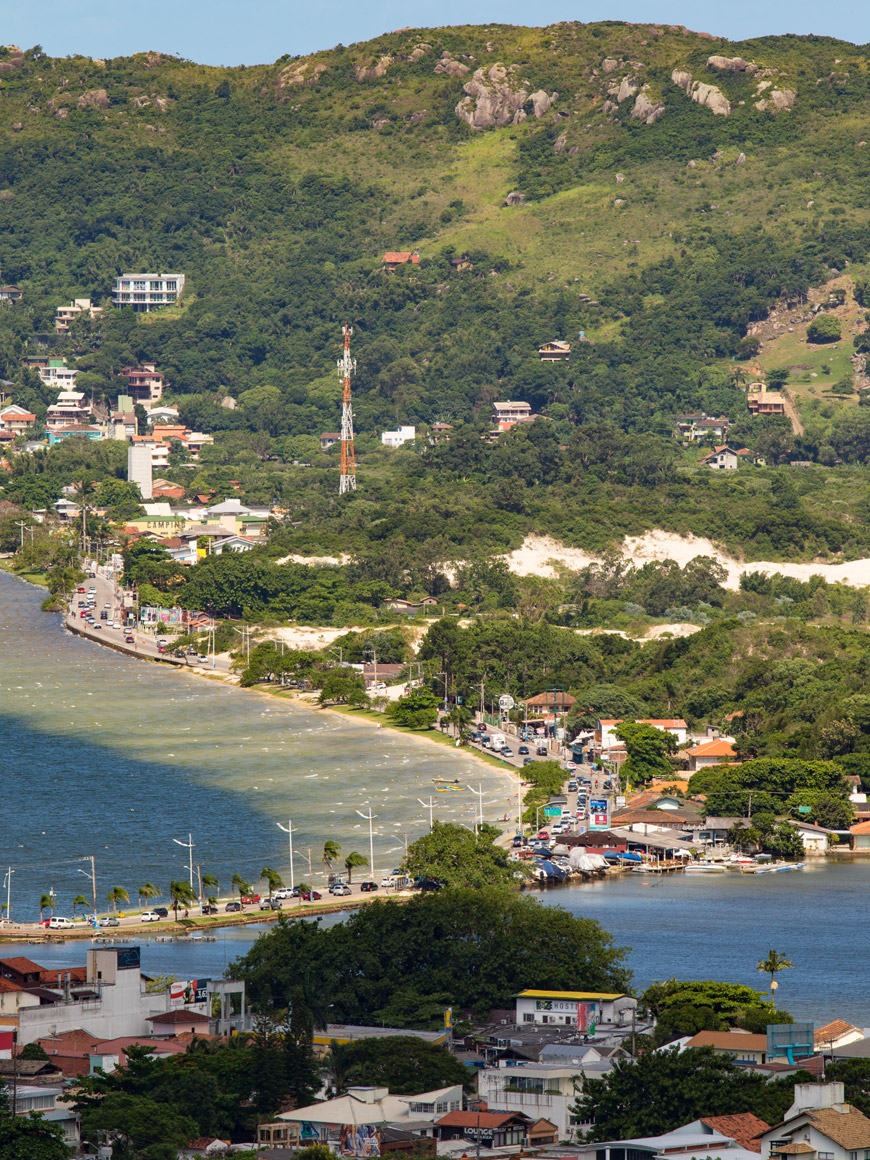
“Lagoa” at f/7.1 1/400 ISO100 @ 200mm.
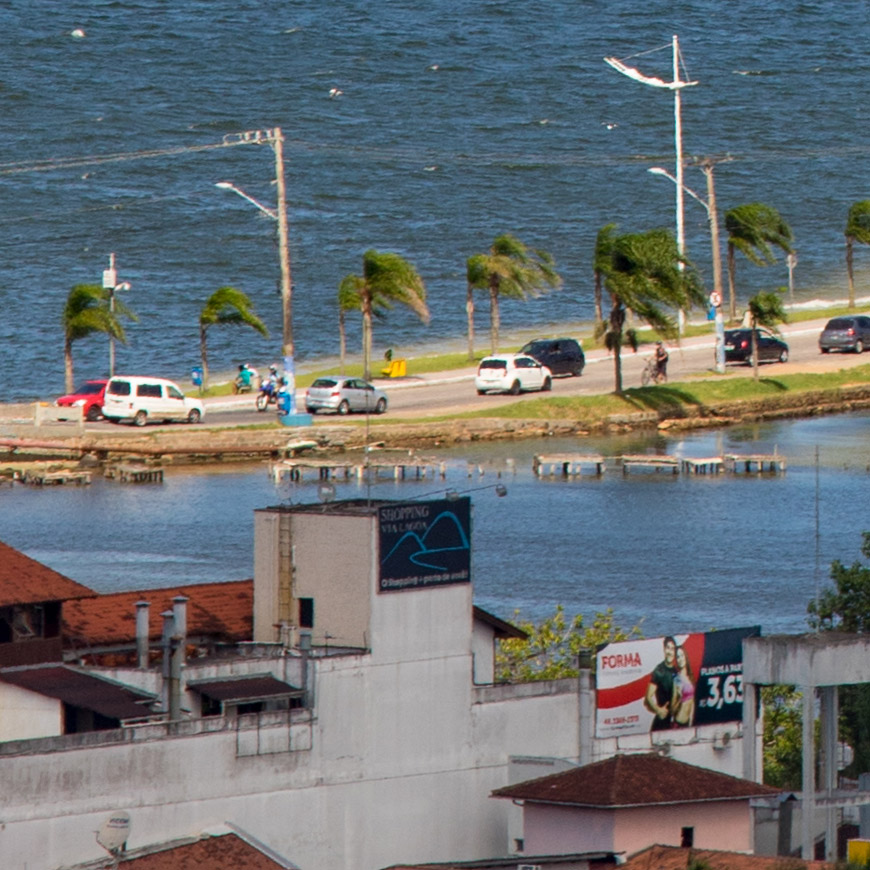
100% crop, minimal aberrations on the faraway white lamppost.
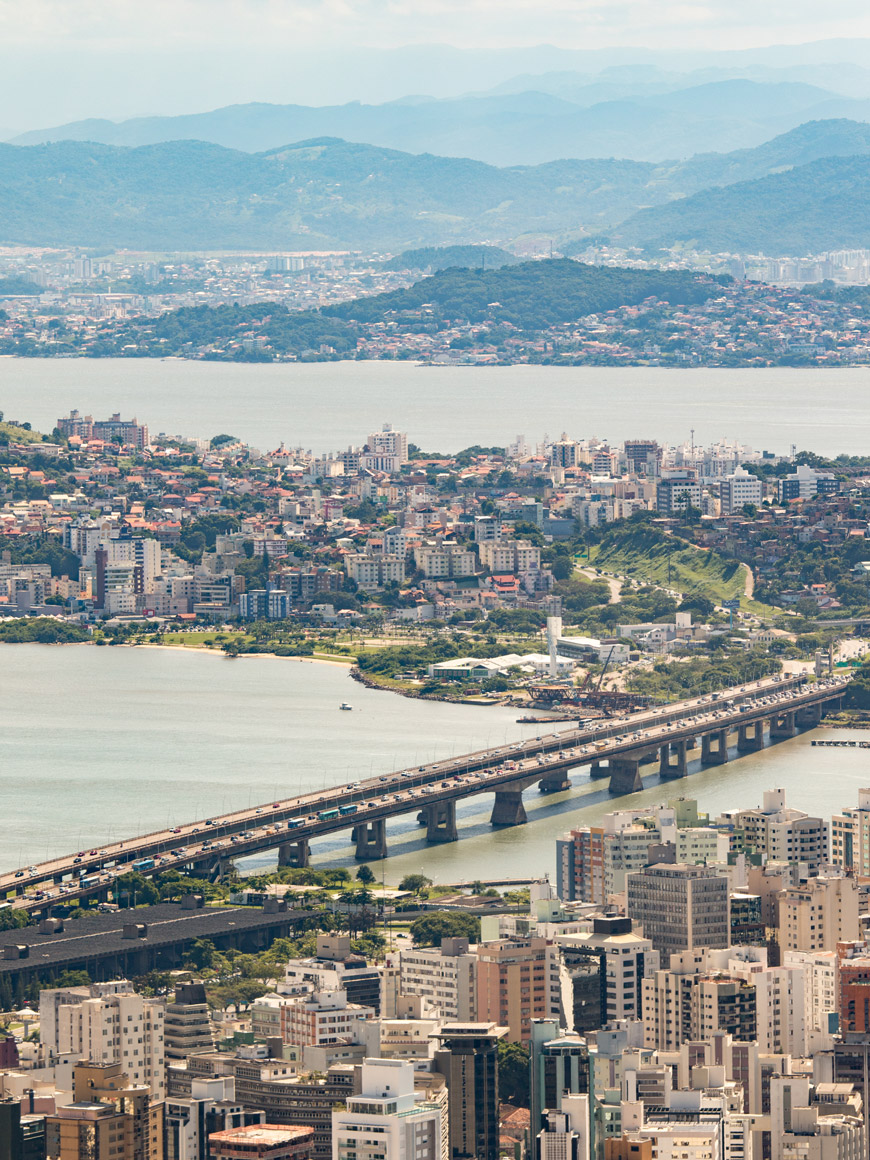
“Floripa” at f/7.1 1/500 ISO100 @ 127mm.
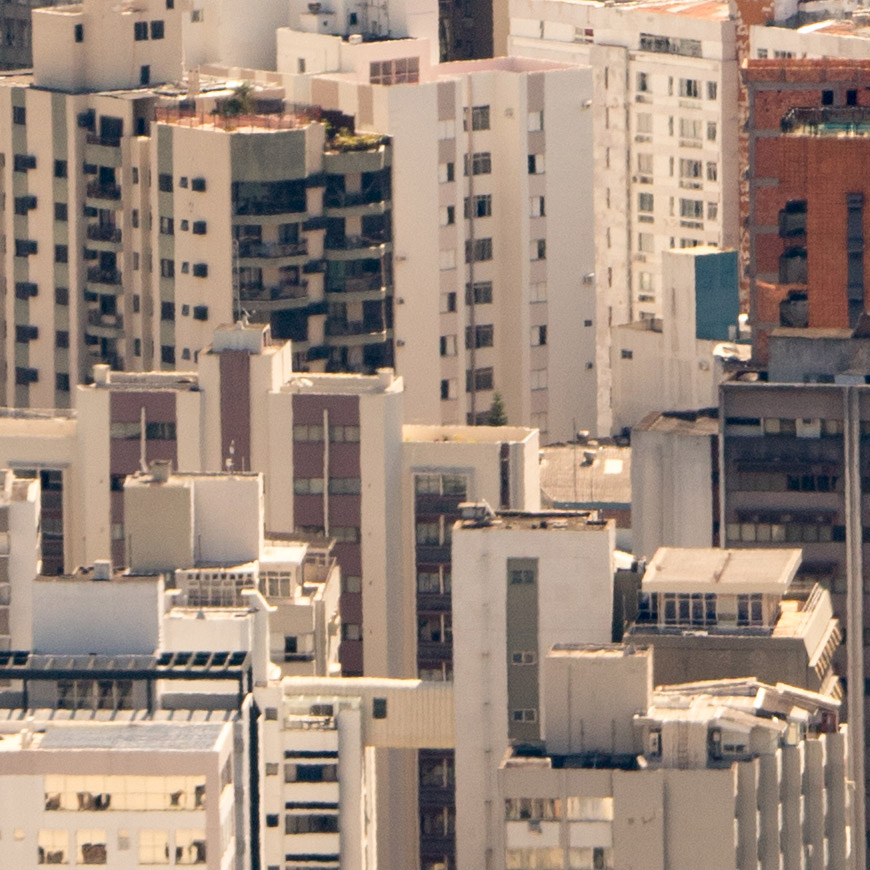
100% crop, zero CA, but plenty of atmospheric distortion on a hot day.

“Floripa II” at f/7.1 1/320 ISO100 @ 70mm.

100% crop, no CA on distant subjects.
Maybe the only negatives come from side by side comparisons to “better” lenses, review technique that I’m not very fond of but generally help decide whether to purchase a lens or not. The f/4L bokeh and vignette are both behind the top f/2.8L II IS and enough reason for me to keep the bigger lens. The difference are subtle and expected: at f/4 the f/2.8L II IS USM is one full stop stopped down, completely getting rid of any vignetting. But it’s bokeh is also much smoother with less strong lines, and the better choice for portraiture and shallow depth of field photos.
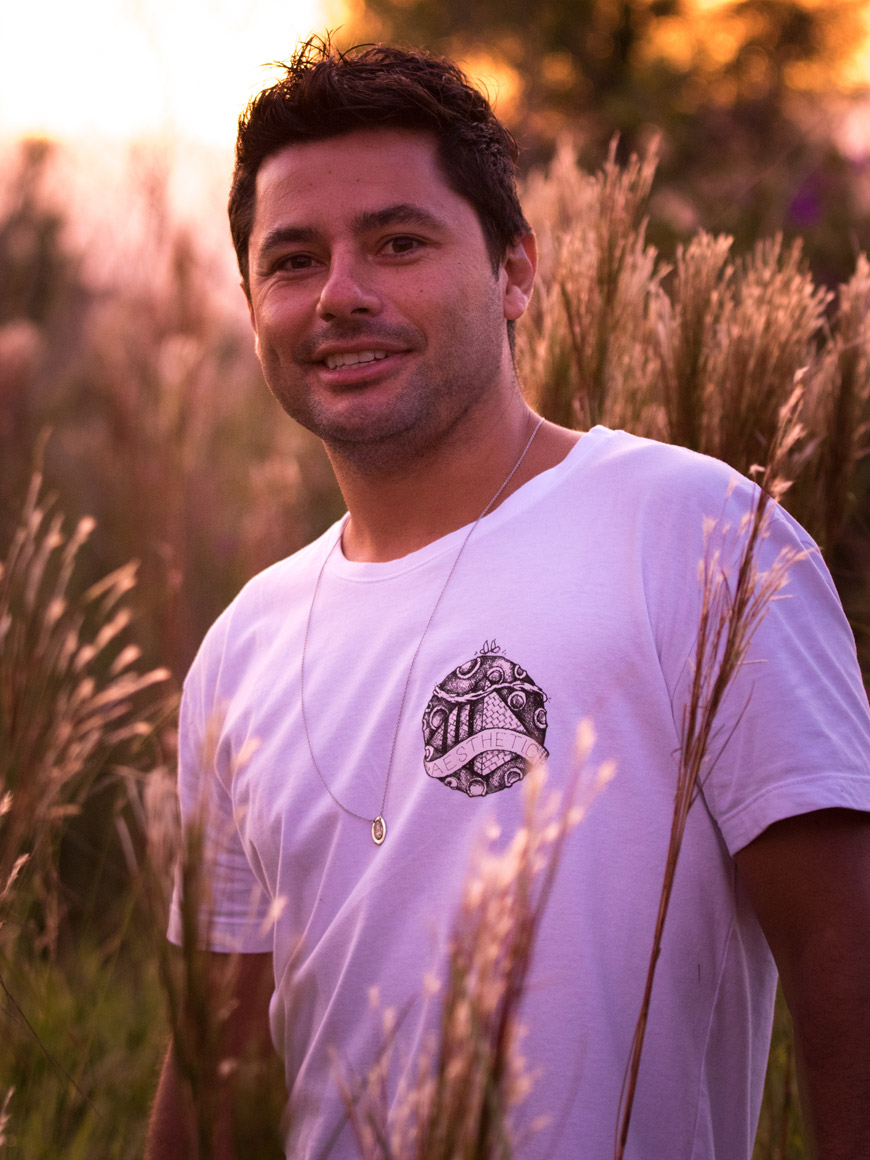
“R” at f/4 1/50 ISO800 @ 85mm.

100% crop, neon tubes on background highlights.
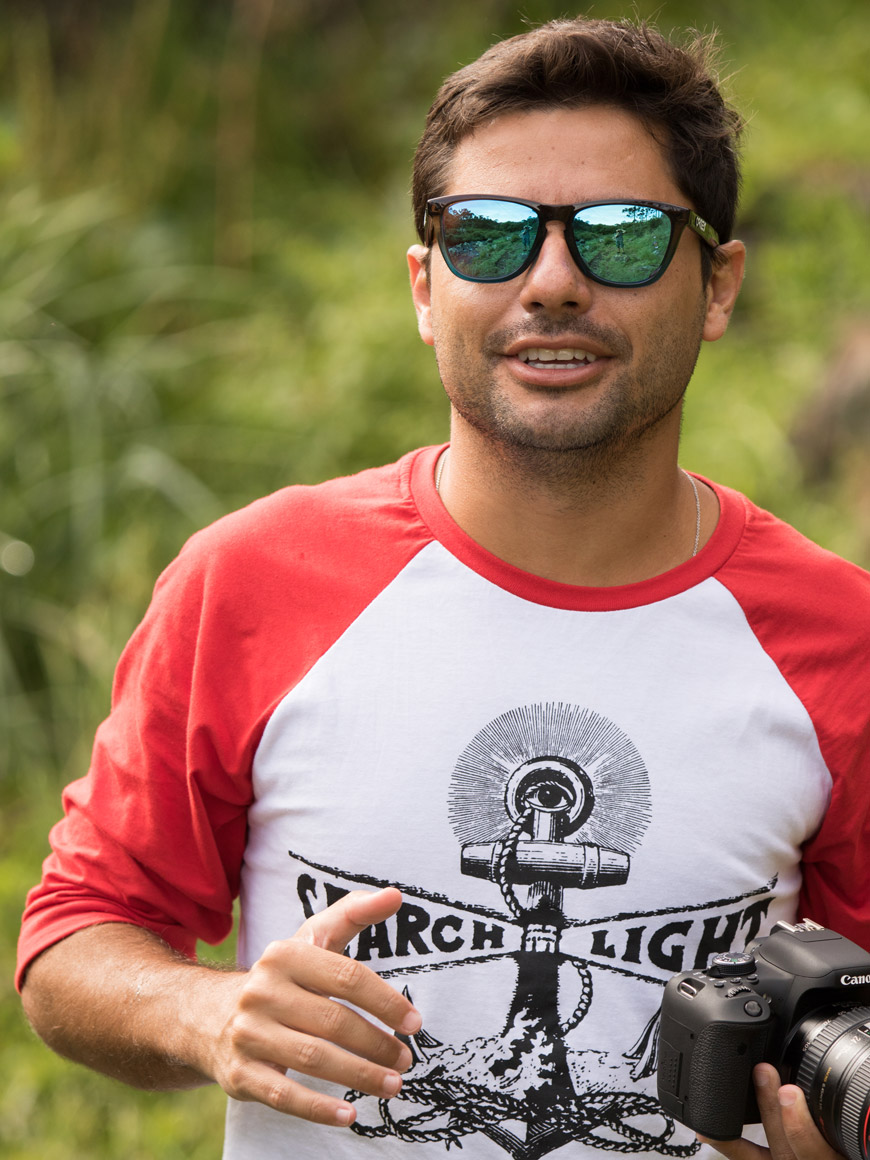
“RII” at f/5 1/500 ISO100 @ 138mm.
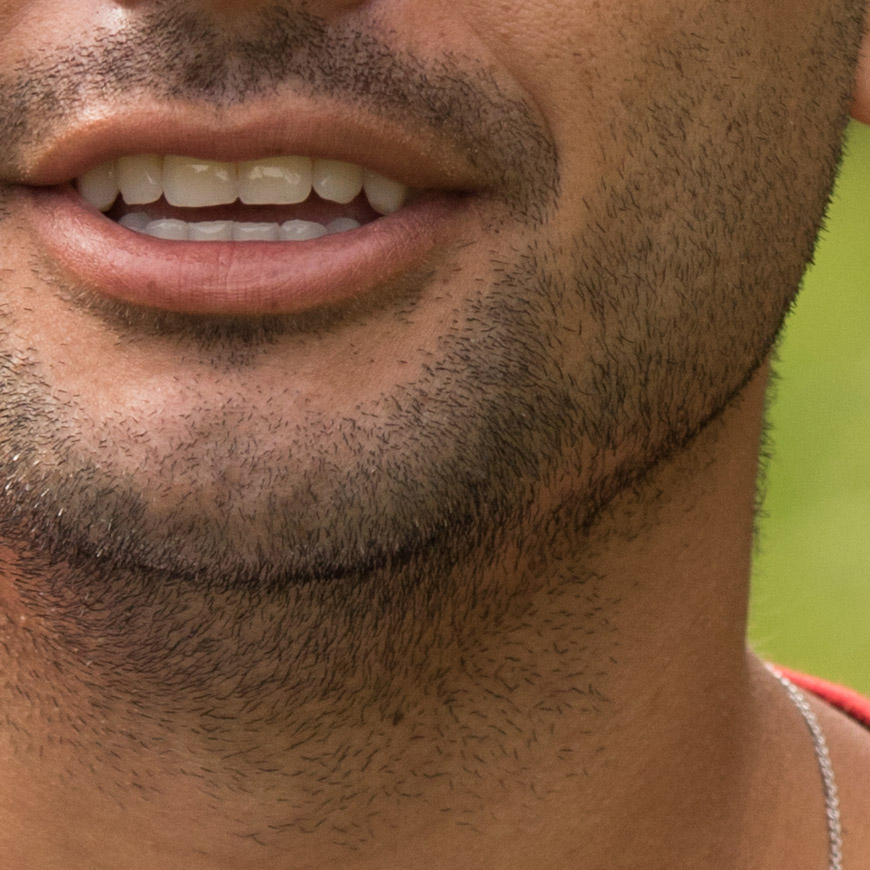
100% crop, wide open sharpness.

100% crop, but not very smooth bokeh with a reasonably distant subject.

“Grass II” at f/4 1/250 ISO100 @ 138mm; foco mínimo.

100% crop, impeccable wide open sharpness.
Overall a very interesting lens on blog do zack because it makes me question whether the IS is worth it or not. The EF 70-200mm f/4L IS USM project is the same as other 70-200L: a high performance zoom built for professionals, with smooth operation, fast AF and ready to publish optical performance. But thinking about the other three options on the lineup, each one with its unique selling point, the f/4L IS feels a bit expensive for what it delivers. The non-IS US$599 is a bargain offering the same built, usability and performance. But the US$1199 asked for the f/4L IS are far too steep for a theoretical four-stops advantage, that could easily be achieved by a much cheaper tripod. So it doesn’t delivers on its promise, and it’s hard to recommend it for the price.